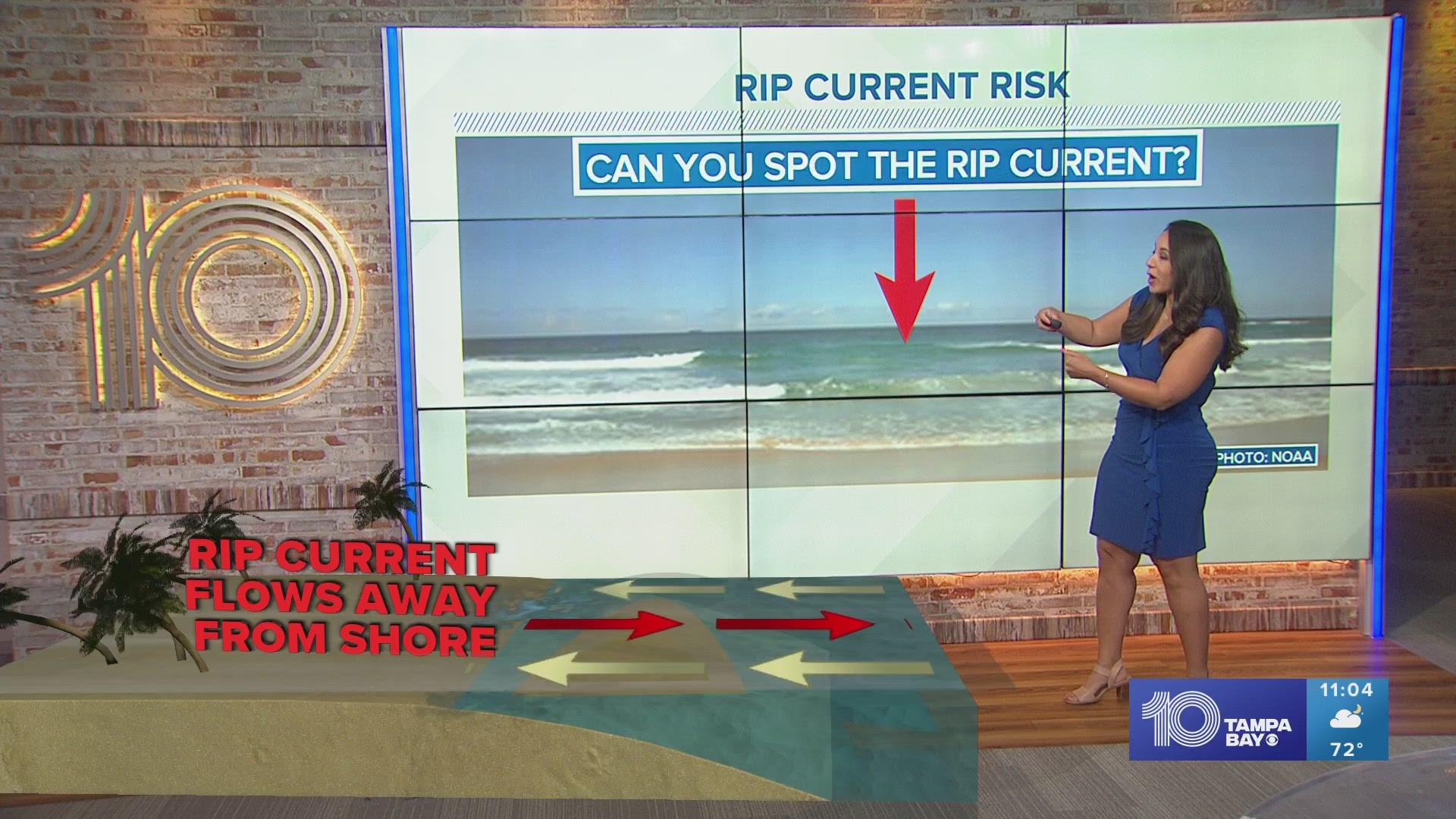ST. PETERSBURG, Fla. — We may still be in spring, but the weather in Florida is starting to feel like summer — attracting many to Gulf.
People across the Sunshine State, and also visitors from other states, have already started to hit the beaches and enjoy the warm weather.
If you have not yet dipped your toes in the sand or gone out for a swim at the beach but plan to do so, be sure to check out the weather forecast and rip current statements from your local area.
If you forget to do the latter of those matters, it'll be a good thing to know how to spot a rip current while you're out on the beach — and here's how.
The best way to prevent getting caught in a rip current is to stay close to the shore and near a lifeguard, but since lifeguards can't always be available, there are indicators to help spot a rip current to know which areas to avoid swimming in, the National Oceanic and Atmospheric Administration says on its website.
Before you get in the water, check for rip currents at an elevated position that overlooks the beach, such as the parking lot or sand dune, and watch the water for several minutes since rip current conditions can change, according to NOAA.
The easiest type of rip current to identify are channelized rip currents as they usually look as darker, narrow gaps of water heading offshore between areas of breaking waves and whitewater, the NOAA says. They can also appear as darker paths heading out through the surf, so make sure to look for gaps in the lines of breaking waves.
You can also look for narrow regions of rippled, choppy water heading offshore when checking for rip currents as waves moving toward the shore may elevate due to opposing offshore rip current flows, causing a different surface water texture.
Below are other ways the NOAA says you can look for rip currents when out on the beach:
- Look for plumes of sand or foam offshore of the breakers, often moved away from shore by rip currents.
- Some types of rips, such as flash rips, can appear as narrow sections of turbulent whitewater heading offshore.
- Look for pronounced scalloped embayments on the beach, which can be caused by channelized rip currents eroding the shoreline.
- Wear polarized sunglasses to help identify contrasting colors in the water; deep rip current channels stand out as darker water.
- Ask a lifeguard if there are any rip currents and to point them out for you.
If you are ever caught in a rip current, the NOAA advises you to relax since rip currents do not pull you underwater and swim along the shoreline until you escape the current's pull. When free from the current's pull, swim at an angle away from the current toward shore.
"If you feel you can't reach shore, relax, face the shore and call or wave for help," NOAA wrote on its website. "Remember: If in doubt, don't go out!"
To learn more about rip current safety, click here.

